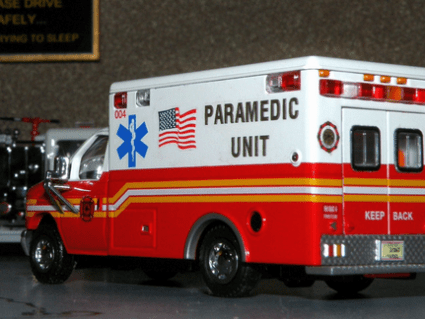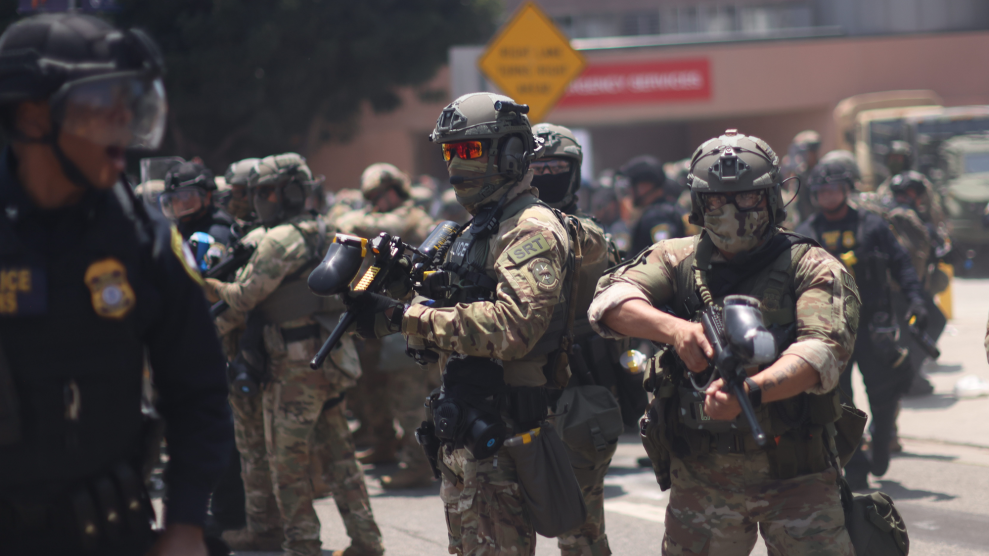When Julian Singleton called 911 about two years ago, it didn’t go well. It was the middle of the night and his 83-year-old wife, Bernice, had fallen and lay unconscious on the kitchen floor. The retired graphics art instructor wanted to call 911, but because Julian has been deaf his entire life, he knew that he first had to call a video relay service. Once connected, he would sign with an interpreter and the interpreter would then speak to the emergency call center in Maricopa County, Arizona. The responses then would be signed back to Singleton in a laborious process that could rob his wife of crucial minutes of care.
But Singleton still went through it. He had no other options. Once connected with 911, he remembers the operator peppering him with questions. “My wife is laying here on the floor,” he tells Mother Jones through an interpreter. “I can’t be answering these questions…So I gave up and hung up. I picked up my wife and took her to the hospital myself.”
Singleton is one of about 1 million people over the age of five who are functionally deaf. There are also 37.5 million adults who have some trouble hearing, according to the National Institutes of Health, and in the first nationally representative study, Johns Hopkins University estimates that 1 in 5 Americans who are at least 12 years old suffer from hearing loss so severe it could make communication difficult.
Those who cannot easily communicate over the phone—and this includes some people with autism, speech disabilities, cerebral palsy, and other conditions—face sometimes life-threatening barriers when trying to call emergency services at 911. The 1990 Americans With Disabilities Act guaranteed direct and equal access to emergency services, and a year later the Department of Justice established rules requiring call centers to be accessible for the deaf and hard of hearing. But this all occurred before cellphones became widely used and relies on an outdated technology known as TTY, or text telephone, in which two people who each have a keyboard communicate through phone lines.
“The old US Department of Justice regulations say all 911 centers must be accessible to use by TTY and voice-over,” Claude Stout, executive director of Telecommunications for the Deaf and the Hard of Hearing, explains through an interpreter. “But the problem is, not many of us use TTYs anymore.”
That’s why disability rights lawyers have joined with deaf advocates in New York and Arizona—where Singleton is a plaintiff—to sue localities charging that emergency services are out of compliance with the ADA by not providing equal access to 911. In Arizona, two other residents and the National Association of the Deaf, a group that advocates on behalf of the deaf and hard of hearing, are suing the state, some cities, local governments, and government agencies. In New York, New York City is being sued as well as emergency service agencies in Nassau and Suffolk counties on Long Island. Both lawsuits are calling on the courts to require call centers to adopt text-to-911 technologies. In a statement to Mother Jones, the National Association for the Deaf says it has “determined that litigation is necessary to effectuate a nationwide solution.”
Stout explains the failure to update the regulations from the early 1990s have left the deaf and those who cannot communicate easily over the phone dependent on others to access emergency care. He knows from personal experience. When Stout thought he was having a heart attack in 2011, he says he’s lucky he wasn’t alone. His colleagues in the office were around to drive him to the hospital.
Even though deaf people can reach emergency services through relay services, the many steps required in the process makes equal access impossible. “The average time is anywhere from three to eight minutes before we’re connected to the 911 center,” Richard Ray, an expert on the issue who works on improving accessibility and ADA compliance for the city of Los Angeles, explains through an interpreter. “Each second counts in those emergency situations.” This wait time is far from “functionally equivalent” to that of a hearing person as required by the ADA, Ray notes. The national standard established by the National Emergency Number Association requires 90 percent of 911 calls to be picked up within 10 seconds.
This isn’t a new problem, but disability advocates argue there is a simple solution: 911 call centers should be able to transmit and receive texts. “Texting to 911 should have been set up yesterday,” Ray explains. “We’re not in a situation where we can wait any longer.” Additionally, texting would provide another option for everyone to reach emergency services when calling might be unsafe, like during an ongoing break in.
One problem with adopting text-to-911 technology is structural. According to Kevin Murray, CEO of Mission Critical Partners, a public safety consulting company, and the former chair of the Industry Council for Emergency Response Technologies, every new technology requires a workaround because the infrastructure at emergency call centers was developed in the 1970s and 1980s. While text-to–911 can be added, it’s a complicated process. “Imagine you buy the latest 3-D TVs and LED TVs and you bought your home automation systems and you purchased all these advanced technologies,” Murray says, “but then you hooked them up to a pair of outside analogue antennas.” He notes that this is comparable to what is happening with 911 today because “there are no broadband connections that really tie these systems together.”
Call centers are regulated and funded differently depending on the state and jurisdiction, which means access to 911 depends a lot on where one lives. In some states, text-to-911 is available everywhere, but in other states it doesn’t exist at all or access can vary from county to county. Out of the nearly 6,000 call centers nationwide, fewer than 1,000 accept text messages. To ensure universal access, the federal government would have to start enforcing the ADA. Murray says the industry is out of compliance with the law and the current state of access is “an embarrassment to the industry and to the US as a whole.”
Some call centers are using workarounds to integrate text-to-911 into the outdated infrastructure, but there’s also another option: Next Generation 911, a new system that allows people to communicate with 911 digitally. Eventually the technology will allow people to send images to or even video-call emergency services. Some places, such as Vermont, have upgraded already, and public safety leaders are pushing for Next Generation 911 to be available throughout the country by 2020, but Murray says there’s no federal commitment or funding to implement the service and meet that deadline. Even without it, the jurisdictions that have adopted Next Gen have call centers that are funded locally.
Back in 2010, the Department of Justice announced plans to propose new rules to make emergency services accessible with modern technology and accepted comments on the matter for about six months. Disability advocates are hopeful the new administration will continue to move forward with the process and update the rules later this year, as previously scheduled by the Civil Rights Division of the Department of Justice under the Obama administration. The division declined a request for comment from Mother Jones about next steps.
Real change may be forced by the courts. Both of the lawsuits seeking equal access to 911 are in their early stages, but Mary Vargas, an attorney for the plaintiffs in Arizona, doesn’t believe arguments against the lawsuit will hold up. The judge has denied the defendants’ motion to dismiss the lawsuit, in which they argued call centers already provide adequate access and follow federal guidelines. “If I were a 911 provider that was not providing text-to-911 access, I would be calling a meeting tomorrow to make it happen because this is not a negotiable issue,” she says. “You cannot choose not to provide 911 access to people because of disability. It’s simply the most profound kind of discrimination.”

















